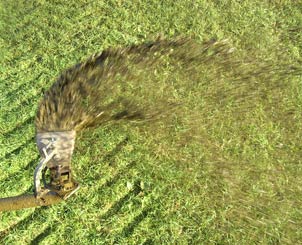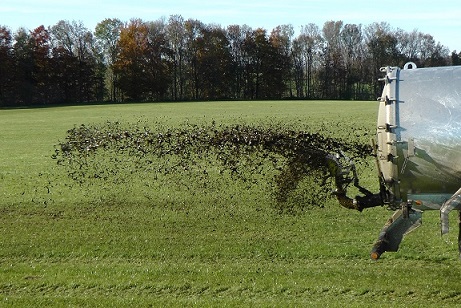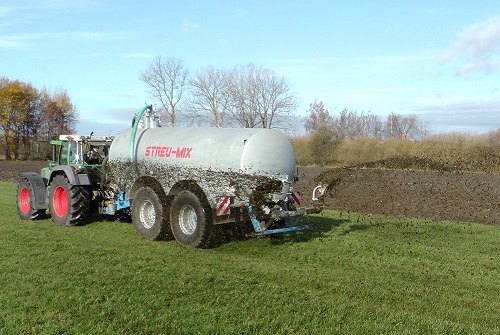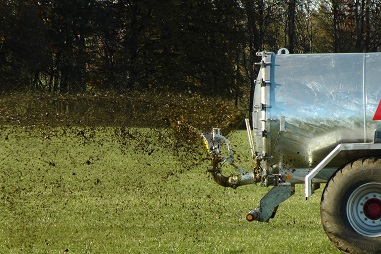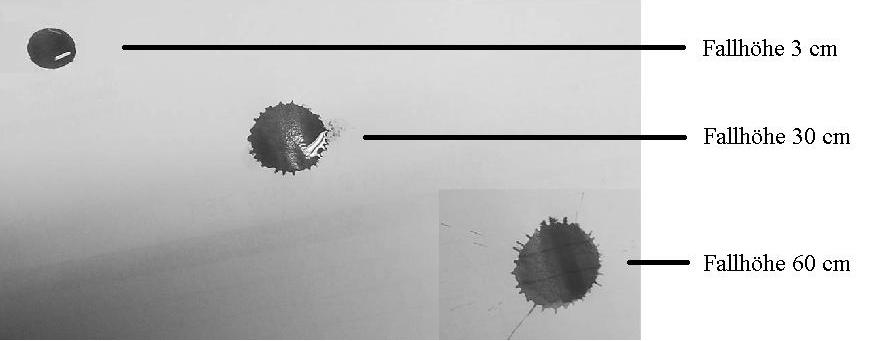Your advantage
|
Why should nitrogen
losses be limited during manure application? |
|||||||||||||||
|
·
Nitrogen losses are harmful
to the environment. ·
Nitrogen losses are
expensive: They increase the need for synthetic fertilizers. |
|||||||||||||||
|
|
|||||||||||||||
|
On what do the nitrogen
losses mainly depend? |
|||||||||||||||
|
Most farmers believe that the maximum nitrogen
loss during manure application occurs while the manure is flying through the
air. But actually, the evaporation occurs primarily in the time between the
application and the infiltration/incorporation of the manure into the soil
(see Graph
1, Graph
2). |
|||||||||||||||
|
An important objective of manure spreading is
therefore to slow down the evaporation. To this end, on the one hand a more
favorable time for applying the manure should be selected (ideally: low
temperatures, little wind, shortly before precipitation/incorporation into
soil). On the other hand, appropriate technology should also be employed. The
most well-known and effective technique for this is to apply manure with drag
hoses. The surface of the manure is greatly reduced and the evaporation
process is slowed down. It is still little known that this effect is also achieved
with the MOESCHA swivel spreader. |
|||||||||||||||
|
|
|||||||||||||||
|
How does the MOESCHA
spreader help to minimize Nitrogen losses? |
|||||||||||||||
|
Because of the geometric shape of the
swiveling head and because of the deflection of almost the entire manure
stream, the patented MOESCHA swiveling spreader forms very large drops. The
bigger the drops, the better the nitrogen is protected from evaporation. Cube
example: |
|||||||||||||||
|
|||||||||||||||
|
As a consequence: Drops that are twice as
large, yield half the drop surface per unit of manure and, thus,
significantly less nitrogen evaporation. |
|||||||||||||||
|
|
|||||||||||||||
|
Large drop manure
application via patented swivel spreading |
|||||||||||||||
|
(detailed
view by clicking on the figure) |
|||||||||||||||
|
|
|||||||||||||||
|
However, in order for the manure also to come
to rest on the ground in the form of large drops, its impact speed must not
be too high. The following graph makes this clear: |
|||||||||||||||
|
|
|||||||||||||||
|
With the MOESCHA swiveling spreader, the drops
are released with reduced speed in an almost horizontal direction: |
|||||||||||||||
|
·
Exit speed at the nozzle:
11.6 m/sec corresponds to 42 km/h ·
Exit speed from the
swiveling head: 8 m/sec corresponds to 29 km/h |
|||||||||||||||
|
This is a clear advantage over impact
spreaders, because only in this way is a large-drop spreading pattern
produced and, thus, a slowing of the nitrogen evaporation. |
|||||||||||||||
|
|
|||||||||||||||
|
What further advantages
does large-drop MOESCHA manure spreading provide? |
|||||||||||||||
|
Because of the reduced surface and because of
a better ratio of weight to surface, there is clearly better spreading even
in the presence of crosswinds (see DLG test). In addition, the wetting/soiling of the plants
and, thus, damage to them is clearly reduced. The company MOESCHA therefore
recommends applying manure in pastureland at a crop height of approximately
10 cm. The soiling of the leaves is minimal and the nitrogen losses can once
again be sharply reduced (protection of the manure from sun and wind). |
|||||||||||||||
|
|
|||||||||||||||
|
Conclusion: The MOESCHA
spreader is above all the best solution for grassland! |

